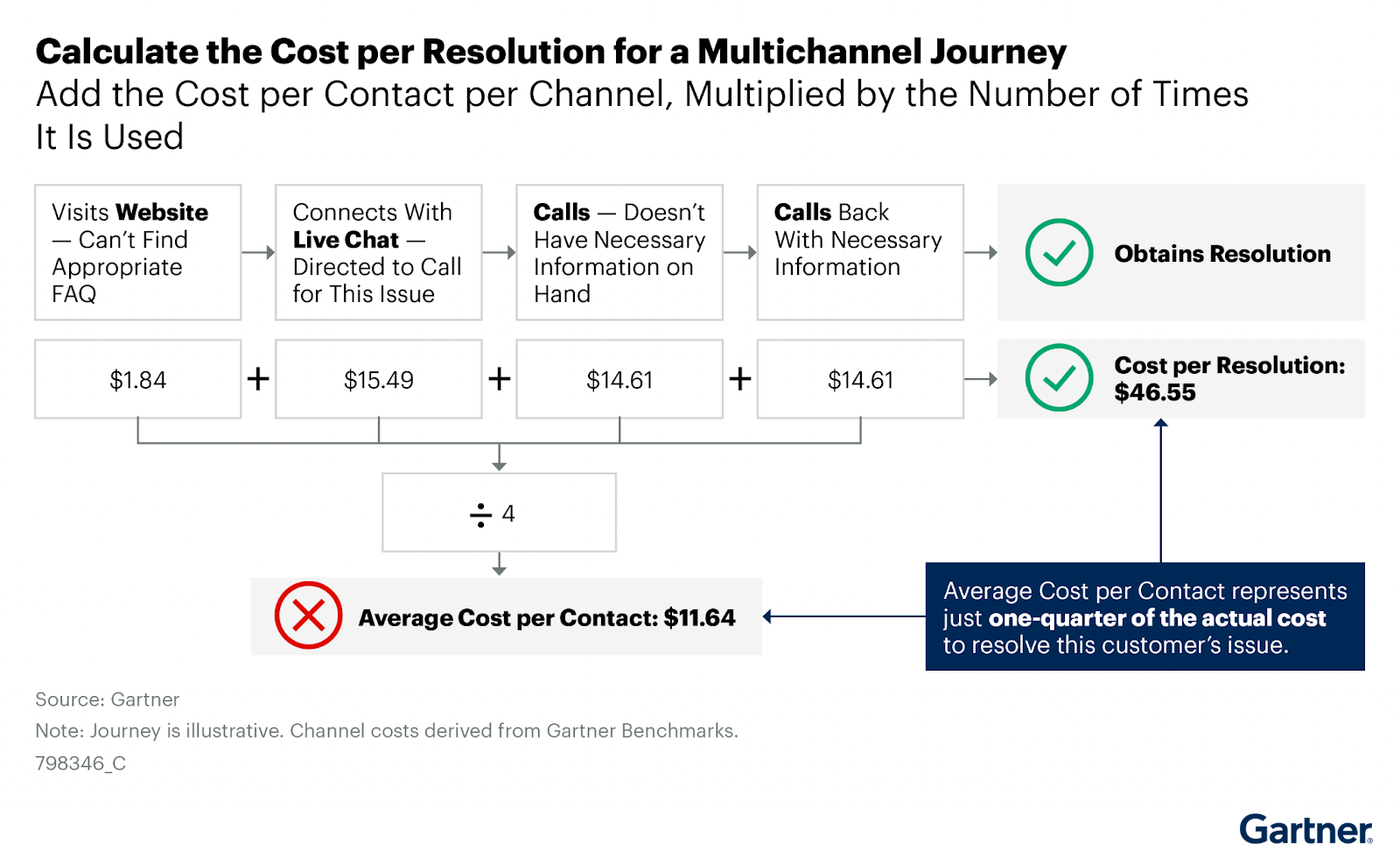In the current economic climate, organizations are increasingly focused on cost management. The number of CEOs naming cost management as a top three priority grew 69 percent in a 2023 survey from Gartner. No function is exempt from this priority, customer service and support included.
Customer service and support leaders have measured and benchmarked their cost per contact for years, and it is widely regarded as the number one strategic metric when evaluating both cost-reduction efforts and the efficiency of the service and support function. But driving lasting reductions in cost per contact is a recurring challenge, and such efforts can unintentionally diminish CX and increase costs.
Rapidly increasing personnel and service costs can counter improvements in operational efficiency, resulting in little change to, or worse, an increase in, the measure. Furthermore, in trying to drive reductions (normally in more expensive live channels), leaders might unwittingly incentivize their employees to change behaviors in ways that lead to poor CX, diminished loyalty, and increased costs.
Focusing on cost per contact alone is unlikely to drive improved operational excellence and cost optimization. Leaders must look at cost through a broader lens, including a measure of the number of contacts required to resolve and an end-to-end understanding of which channels are used in the resolution journey alongside their cost per contact. Together, these three inputs can be combined to calculate a more holistic strategic cost measure: cost per resolution. Often, we observe that the true cost per resolution for a customer issue can be four times as much as the reported cost per contact.
How to Measure Cost per Resolution
Organizations often find it easier to take a two-step approach to introducing a cost per resolution metric, starting first with a single-channel view and then progressing to a cross-channel calculation.
Start with a Single-Channel View
One of the most common issues associated with cost per contact is that it fails to take into account customer journeys that require multiple interactions in the same channel to obtain resolution. Gartner research has found that just 38 percent of service and support requests are resolved on first contact, with 53 percent of customer journeys involving two or more interactions (the remaining 9 percent abandon their efforts to obtain resolution after their first attempt).
Because of the likelihood of a multi-touchpoint customer journey, a channel is not necessarily most-effective based purely on its cost per contact. When setting out to measure cost per resolution for the first time, customer service and support leaders should look to understand the cost per resolution in a specific channel. To do this, they can multiply the cost per contact for that channel by the average number of contacts required to resolve. Many B2B organizations already measure this as their cost per case per channel.
Expand with a Cross-Channel Calculation
Organizations can increase the accuracy and actionability of their cost per resolution calculations by considering the customer's end-to-end service journey across channels. This is an important consideration because Gartner research finds that, on average, customers use 2.2 channels (which might be a mix of self-service and assisted-service channels) before their issue is resolved, and 30 percent of customers use three or more channels, which leads to operational inefficiency and high-effort customer service experiences.
To calculate cross-channel cost per resolution, customer service and support leaders must identify the channels used in the process of resolving an issue and take into account multiple uses of the same channel in the path to resolution. Then, as in the single-channel calculation, apply the associated cost per contact for each channel used to understand the actual cost per resolution across all the touchpoints.

Specific Areas to Analyze Underlying Cost Drivers
While having a macro-level cost per resolution calculation is helpful when communicating to organizational leadership, customer service and support leaders should further analyze cost per resolution by issue type/customer segment/product or service and multiply the cost per resolution by the volume of issues in that segment to identify where to prioritize cost-efficiency efforts.
Customer service and support leaders should not fixate on the channel where the cost per contact is highest&mdash:typically, this will be an assisted service channel toward the end of the customer journey, and cost-efficiency efforts are likely to be challenging. Instead, they should look at the earlier steps in the customer journey. These are more likely to be self-service channels where the cost per contact is lower.
Critical to driving a lower cost per resolution is to look at how these earlier channels can be improved to better contain the customer and offer steps to resolution. These don't require the customer to subsequently jump to a more expensive assisted-service channel. For example, deploying an effective chatbot in a journey that previously entailed a visit to self-service followed by a phone call could reduce the cost per resolution by 75 percent.
A second area to focus efficiency efforts is understanding why repeat contacts using the same channel are necessary and putting measures in place to reduce this. Once channel-usage and repeat-contact-cost drivers have been analyzed and action has been taken to improve these areas, customer service and support leaders can finally address the cost per contact itself. Typically, this is of greatest concern in assisted-service channels.
Driving reductions in cost per contact is a recurring challenge for customer service and support leaders, but such efforts can unintentionally diminish CX and increase costs. By focusing on cost per resolution, they can achieve bigger, lasting reductions that improves CX.
Christopher Sladdin is a senior principal analyst within Gartner's Customer Service and Support Practice.